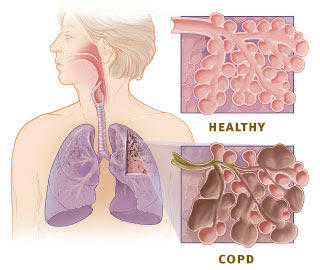COPD - Gordon's Functional Health Patterns
Chronic Obstructive Pulmonary Disease (COPD) is a chronic lung disease that is progressive, meaning that the disease lasts a lifetime and is slowly getting worse from year to year. In the course of this disease are the phases of acute exacerbation. Various factors play a role in the course of the disease, among other risk factors are factors that cause or aggravate diseases such as smoking, air pollution, environmental pollution, infections, genetics and climate change. The degree of airway obstruction occurs, and the identification of components that allow for reversibility. Phase course of the disease outside the lung and other diseases such as sinusitis and chronic pharyngitis. That ultimately these factors make further deterioration occurs sooner. To undertake the management of COPD should be considered these factors, so that the better treatment of COPD. Chronic obstructive pulmonary disease is a broad classification of disorders that includes chronic bronchitis, bronchiectasis, e...


